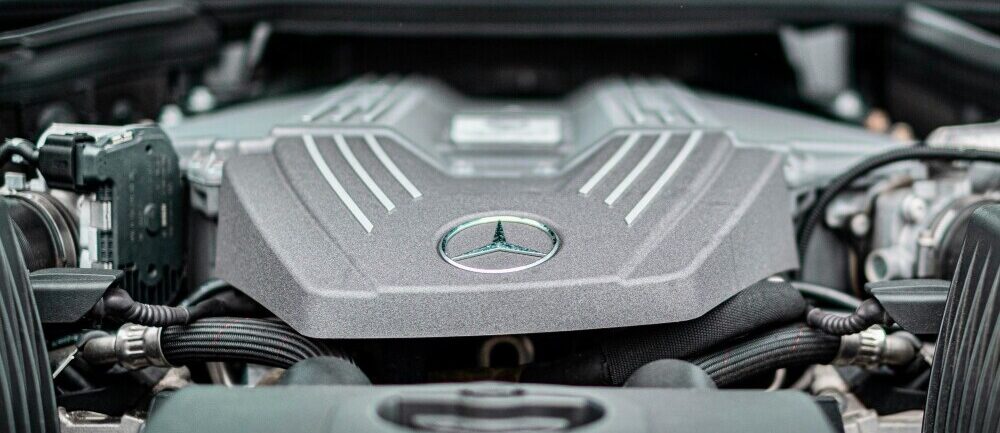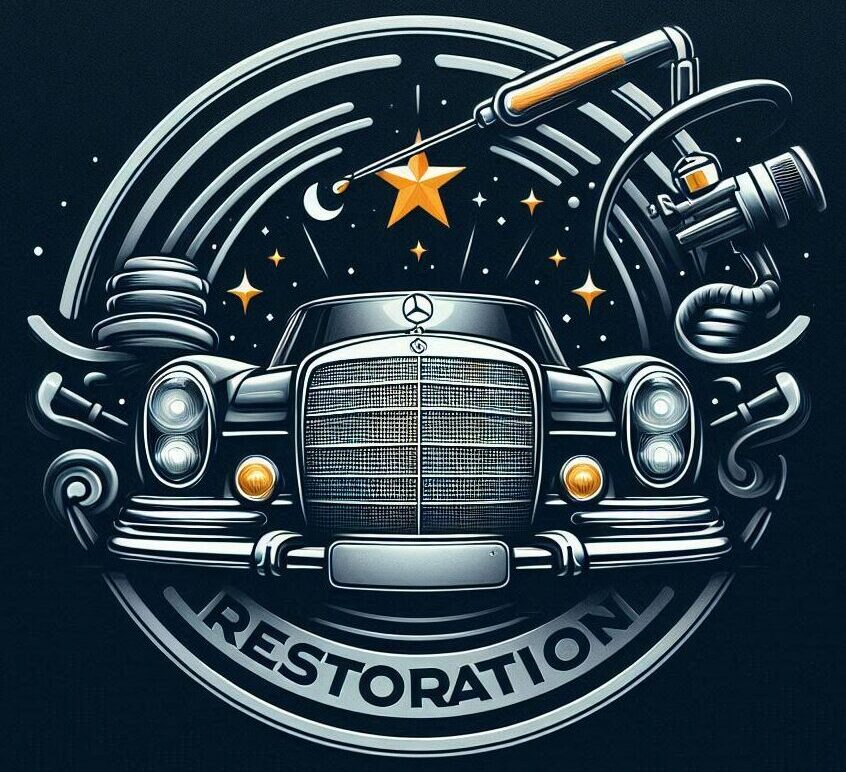
There’s something captivating about classic Mercedes-Benz models. With their sleek lines and timeless elegance, they’ve won the hearts of car enthusiasts around the world. Restoring a vintage Mercedes engine is like bringing history back to life – an incredibly rewarding journey, whether you’re a seasoned car enthusiast or just starting out. This guide will walk you through the best tips for restoring a classic Mercedes Benz engine to bring your Mercedes power train back to life.
Restoring a classic Mercedes engine isn’t just about making the car look beautiful; it’s about making it run like a dream. Each engine type, from the straightforward Inline 4 to the powerful V8, has its quirks and character, making the process both challenging and fulfilling.
Best Tips For Restoring A Classic Mercedes Benz Engine: Step by Step Guide:
Step 1: Understand What You’re Taking On
Key Tip: Engine restoration takes time, patience, and a few essential tools – but you don’t have to be a mechanic to get started.
Before diving in, get familiar with your project. Restoring a vintage engine is a big undertaking that requires a mix of tools, some problem-solving skills, and a readiness to learn. Consider resources like the Haynes Manuals for Mercedes or YouTube channels focused on classic car restoration, which are excellent for step-by-step tutorials.
Recommended Resources:
- YouTube: Channels like ChrisFix or JMSpeedshop
- Manuals: Haynes Mercedes-Benz Manuals for detailed model-specific guidance
Step 2: Know Your Engine Type
Each Mercedes engine type has its own personality. Start by identifying the engine you’re working with, whether it’s an Inline 6 or a V6, as each one has specific needs that can impact your restoration approach. Knowing the type helps you anticipate any challenges and might even simplify the process. Check your car’s manual or look up your model online to confirm the engine type.
Recommended Resource:
- Mercedes Classic Center: Mercedes-Benz Classic USA, where you can find information on model-specific engines
Step 3: Create a Project Plan
Key Tip: Mapping out each stage – from disassembly to reassembly – can prevent costly mistakes and help you stay organized.
A solid plan can make a huge difference. Write out each step of your project, such as dismantling, inspecting, and reassembling, and consider documenting your work with photos or videos. This way, you’ll have a reference if you need to retrace steps, and it’s a great way to showcase your work when it’s all done.
Recommended Resource:
- Online Forums: Sites like BenzWorld offer community advice and project documentation ideas
Step 4: Gather Your Tools
Key Tip: The right tools make everything easier – especially if you’re working with specialized parts.
Basic tools like socket sets, wrenches, and screwdrivers are essential for any restoration. But Mercedes engines might also require specialized tools, such as spline bit sockets or a valve spring compressor. If you don’t want to buy them outright, check if they’re available for rent at your local auto shop or ask around in classic car groups.
Budget Tip: Consider buying used tools online or at garage sales. Many high-quality tools can be found second-hand for a fraction of the price.
Recommended Resources:
- Tool Rentals: AutoZone and NAPA Auto Parts offer tool rental services
- Used Tools: Check out Craigslist or eBay for deals on second-hand tools
Step 5: Set Up a Safe, Organized Workspace
A clutter-free workspace isn’t just convenient; it’s essential for restoring complex machinery like a vintage engine. Set up a designated area with good lighting, ventilation, and storage for all parts and tools. Keep safety top of mind with basics like gloves and goggles to prevent injury during your project.
Recommended Resources:
- Organizational Tips: Family Handyman for garage organization ideas and tips
- Safety Gear: Check stores like Harbor Freight for affordable safety gear options
Step 6: Disassemble and Inspect the Engine
Key Tip: Document each step in detail – it’ll be invaluable during reassembly.
Start dismantling your engine piece by piece, keeping track of each part. Take photos or videos to document the process, which can prevent headaches later. Inspect components like pistons, crankshafts, and bearings for wear and tear. Knowing which parts need replacing and which can be refurbished will save you time and money.
Cleaning Tip: Use rust removers or solvents to clean each part carefully. Take extra care with vintage parts, as they can be more delicate.
Recommended Resources:
- Engine Disassembly Tips: MotorTrend offers great tips for handling vintage engines
- Cleaning Supplies: Amazon or AutoZone have rust removers and cleaning solvents
Step 7: Source Authentic Parts
Key Tip: Authentic parts may cost a bit more, but they’ll help maintain your Mercedes’ historic value.
When replacing parts, original Mercedes parts are best for keeping the car’s original integrity. If authentic parts aren’t available, make sure any modern substitutes are compatible with your engine model. Some aftermarket parts may look similar but can affect performance, so check with a reliable parts dealer or consult forums to confirm compatibility.
Recommended Resources:
- Authentic Parts: Mercedes-Benz Classic Parts Search
- Aftermarket Parts: FCP Euro offers quality aftermarket parts with a lifetime warranty
Step 8: Reassemble and Fine-Tune
Once you’ve cleaned, inspected, and sourced all parts, it’s time to reassemble. Refer back to your documentation and take your time with each step. Precision matters, so ensure everything is placed exactly as it should be. Rebuilding an engine isn’t just about making it functional – it’s about honoring the craftsmanship behind it.
After reassembly, it’s time to tune the engine. Adjust the timing, check any carburetor settings, and make sure everything’s synced up. This will help your Mercedes engine run smoothly and perform as expected on the open road.
Recommended Resource:
- Engine Tuning Guide: Check out Hot Rod Network for beginner-friendly tuning tips
Step 9: Test Run and Maintain Regularly
Key Tip: Testing on a smaller scale helps catch issues before they become big problems.
After tuning, give your engine a few test runs, listening for unusual sounds and observing performance under different conditions. Identifying issues early on can prevent bigger problems down the line.
Routine maintenance – such as oil changes and belt checks – will keep your engine running smoothly long after restoration. Regular care is the best way to protect your hard work and enjoy the car for years to come.
Recommended Resources:
- Maintenance Tips: Classic Mercedes Club has maintenance guides and community support for classic models
Step 10: Share Your Journey with the Community
Restoring a classic Mercedes engine is no small feat – and it’s an accomplishment worth sharing! Join online classic car communities or attend local meetups to connect with fellow enthusiasts. Sharing your story can inspire others, and you might just pick up a few new tips along the way.
Recommended Communities:
- Online Forums: BenzWorld and The Vintage Mercedes Forum are great places to share your experience
- Social Media Groups: Join Facebook groups like “Classic Mercedes-Benz Enthusiasts” to connect with others
Restoring a classic Mercedes-Benz engine is a rewarding journey, offering a chance to learn, create, and keep history alive. Follow these steps, take it slow, and enjoy the process – every moment is worth it!

Fascinating and insightful article. I am nowhere close to being a mechanic, but I do enjoy classic cars. I find that the people I meet at classic car shows are a breed to themselves. Their passion is very noticeable in their work. Your passion shines through in this article and it is a very good read. Thank you.
Thank you so much for your kind words! It’s wonderful to hear that you have passion for classic cars. Classic car enthusiasts truly are a unique and dedicated community, and it’s inspiring to see how these cars bring people together. I’m glad the article conveyed that same enthusiasm, and I appreciate you taking the time to share your thoughts. Thank you for reading!
This post provides an insightful guide on restoring a classic Mercedes-Benz engine, covering key aspects like assessing the engine’s condition, sourcing authentic parts, and choosing the right tools for the job. It’s clear, practical, and emphasizes the importance of patience and attention to detail for a successful restoration. For anyone passionate about classic cars or tackling a Mercedes-Benz project, these tips are incredibly valuable. It’s a must-read for enthusiasts looking to revive a vintage engine with precision and respect for the brand’s legacy.
Thank you so much for your comment! The restoring process is truly a rewarding experience for those passionate about the Mercedes brand and its legacy. Bringing a vintage Mercedes engine back to life is not easy, but with the right tools, authentic parts, and careful planning, achieving something extraordinary is possible. Wishing you all the best on your restoration journey, and feel free to reach out if you have any questions!
This article is a great resource for anyone looking to restore a classic Mercedes-Benz engine! The tips you’ve shared are both practical and insightful, especially the focus on maintaining originality and ensuring the engine components are in top condition. I appreciate the detailed approach to addressing common restoration issues and the importance of using quality parts. Thanks for sharing these valuable insights—this is definitely going to help anyone looking to bring their classic car back to life!
Thank you for your kind words! Restoring a classic Mercedes-Benz engine is truly a labor of love, and it’s wonderful to hear that the tips resonated with you. Maintaining originality while ensuring top-notch performance can be a balancing act, but the rewards of breathing new life into such a timeless machine make it all worthwhile. If you experience a restoration project, please share your journey—I’d love to hear about the process and see how your classic car transforms!